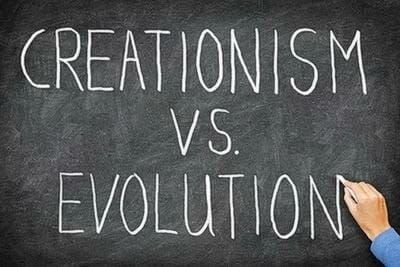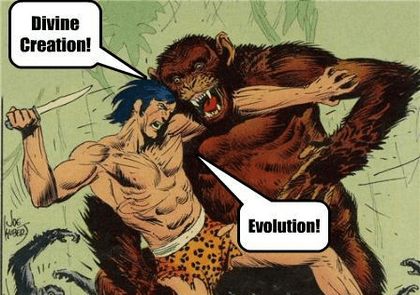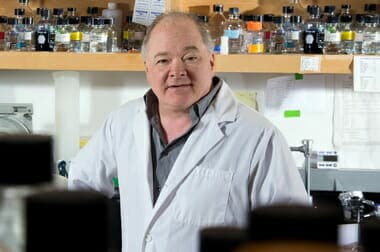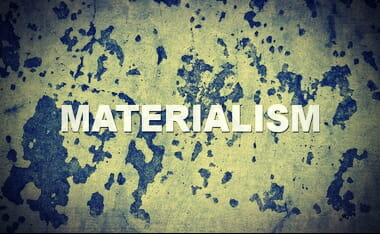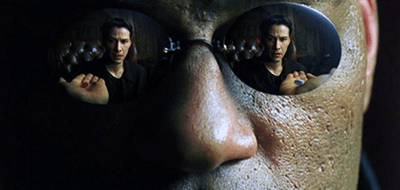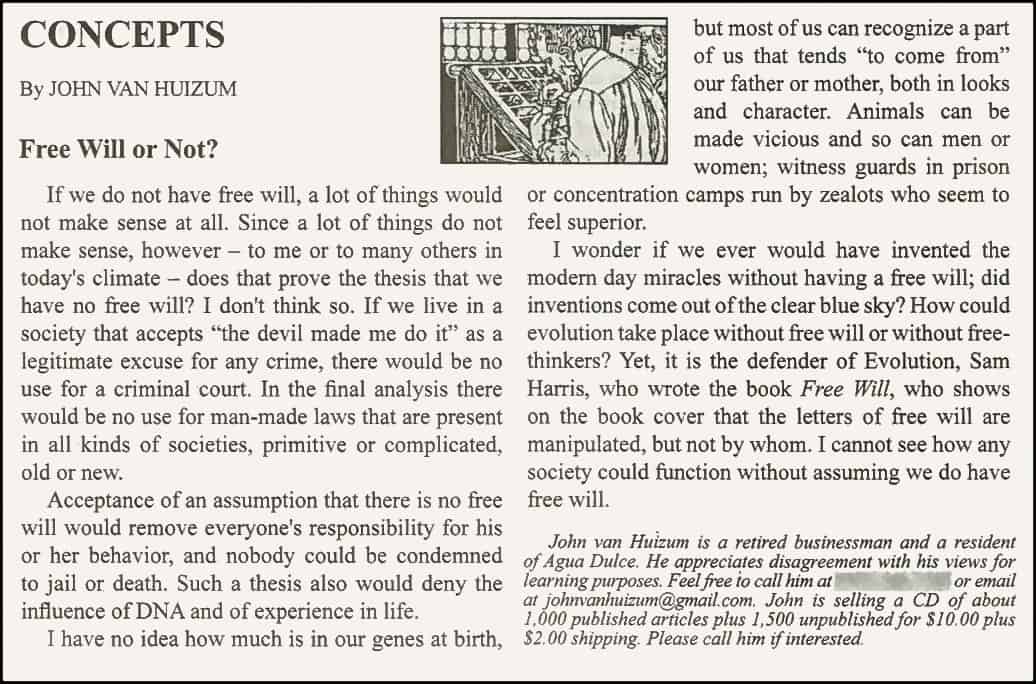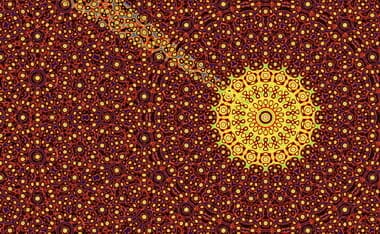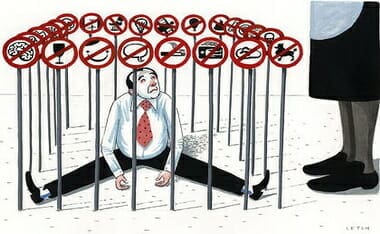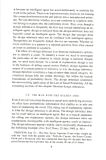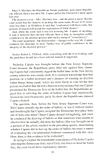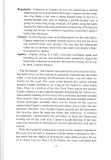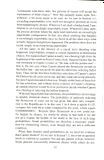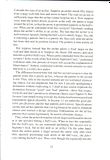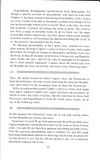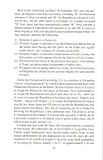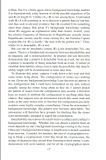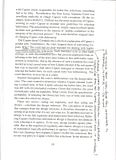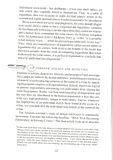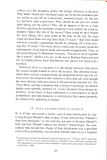…This is continued from Part I
Nick DeM. again adds
i can’t get enough of this conversation!!! pbs needs to give you gentlemen a morning talk show.
ME
May I say I disagree that the data supports evolution, neo-Darwinian at least. The data is INTERPRETED a certain way, for instance, from my first chapter of my book (it is a refutation of sorts to a fellow classmate that produced the DVD, “The God Who Wasn’t There”).
And the main idea here is that one position is metaphysical, the other is more neutral… which will lead into my next comment, and a change of direction to the conversation if you do not mind Doc Melendy
….Let us see if we can ferret out Mr. Flemming’s starting premise with an interview with Dr. Dean Kenyon,[1] Assistant Professor of Biology at San Francisco State University (Emeritus), when he was asked this question: “What are the general presuppositions that scientists make who study the origin of life?” Dr. Kenyon responded:
“Well, I think there are two general kinds of presuppositions that people can make, one is that life, in fact, did arise naturalistically on the primitive earth by some kind of chemical evolutionary process. The second presupposition would be that life may or may not have arisen by a naturalistic, chemical process. Now, if you have the first presupposition, then the goal of your research is to work out plausible pathways of chemical development to go to the bio-polymers, then to the protocells; and what would be likely pathways that you could demonstrate in the laboratory by simulation experiment. If you have the second presupposition, your still going to be doing experiments, but you’re going to be more open to the possibility that the data, as they [or, it] come[s] in from those studies may actually be suggesting a different explanation of origins altogether.”[2]
The logical position, what I would say is the truly scientific way to look at these issues, is to say what Kenyon just did: “life may or may not have arisen by a naturalistic, chemical process.” He, in other words, did not beg the question. This embedded philosophy[3] is what the fervor was over in Kansas a few years back. The Kansas Board of Education caused a firestorm by hearing the drafting board’s proposal to change one word in the working definition of science. The original drafting commission defined science as:
- “Science is the human activity of seeking natural explanations for what we observe in the world around us.”
The Kansas board of education drafting committee defined science as,
- “Science is the human activity of seeking logical explanations for what we observe in the world around us.”[4]
This simple word change, and the subsequent fervor it caused, illustrates the embedded philosophy in current science.[5] So the first thing that Principle Sipus should have asked of Brian is for him to define what science is and the type of evidence his definition of science produces. After getting his definition he should have asked this:
Since the evidence you are asking for is excluded by your definition of empirical science, aren’t you “begging the question” Brian? Likewise I could ask of you to disprove by the scientific method God’s existence, and, by your definition of science — which excludes anything metaphysical — I would be setting you up for failure, because science (at least as you [Brian] define it) is incapable of proving or disproving God.”
[1] Kenyon received a B.Sc. in physics from the University of Chicago in 1961 and a Ph.D. in biophysics from Stanford University in 1965. In 1965-1966 he was a National Science Foundation Postdoctoral Fellow in Chemical Biodynamics at the University of California, Berkeley, a Research Associate at Ames Research Center. In 1966, he became Assistant Professor of Biology at San Francisco State University. He has been Emeritus at San Francisco State University since 2000.
[2] Focus on Darwinism: An Interview with Dean H. Kenyon (Focus on Origin Series, Access Research Network, DVD, 2004).
[3] I will give yet another example that makes my point for me: “Even if all the data point to an intelligent designer, such an hypothesis is excluded from science because it is not naturalistic.” Kansan State University immunologist, Scott Todd, correspondence to Nature, 410 [6752], 30 September, 1999.
[4] Phillip E. Johnson, The Wedge of Truth: Splitting the Foundations of Naturalism (Downers Grove, IL: InterVarsity Press, 2000), 68 (emphasis added).
[5] i.e., scientism, materialism, empiricism, existentialism, naturalism, and humanism – whatever you want to call it… it is still a metaphysical position as it assumes or presumes certain things about the entire universe. D’Souza points this a priori commitment out:
Naturalism and materialism are not scientific conclusions; rather, they are scientific premises. They are not discovered in nature but imposed upon nature. In short, they are articles of faith. Here is Harvard biologist Richard Lewontin: “We take the side of science in spite of the patent absurdity of some of its constructs, in spite of its failure to fulfill many of its extravagant promises of health and life, in spite of the tolerance of the scientific community for unsubstantiated just-so stories, because we have a priori commitment, a commitment — a commitment to materialism. It is not that the methods and institutions of science somehow compel us to accept a material explanation of the phenomenal world, but, on the contrary, that we are forced by our a priori adherence to material causes to create an apparatus of investigation and a set of concepts that produce material explanations, no matter how counter-intuitive, no matter how mystifying to the uninitiated. Moreover, that materialism is an absolute, for we cannot allow a Divine Foot in the door.”
Dinesh D’Souza points to this in his recent book, What’s So Great about Christianity (Washington, DC: Regnery Publishing, 2007), 161 (emphasis added).
(To buttress the above):
If science really is permanently committed to methodological naturalism – the philosophical position that restricts all explanations in science to naturalistic explanations – it follows that the aim of science is not generating true theories. Instead, the aim of science would be something like: generating the best theories that can be formulated subject to the restriction that the theories are naturalistic. More and more evidence could come in suggesting that a supernatural being exists, but scientific theories wouldn’t be allowed to acknowledge that possibility.
(Atheist) Bradley Monton, author of “Seeking God in Science: An Atheist Defends Intelligent Design”
Tom, let’s leave your specialty for a bit, if you don’t mind, and enter into the above topic. “What is evidence.” Historically, in the Christian faith, there have been two books, one is “Book of Revelation,” and the other is the “Book of Nature.” The early Church Fathers (really apologists) said you can/could glean information from both — one of course being more complete, at least, for the Christian.
I am sure you would agree with most of what is below[?], it comes from a discussion I had a decade ago:
…The question then is: What evidence do you need? Or better yet: What kind of evidence? Can Science help? Lets see… the scientific method merely shows that if miracles did occur in the past, that science (as currently defined) could not prove, or disprove, their occurrence. You cannot find out what Napoleon did at the Battle of Austerlitz by asking him to come and fight it again in a laboratory with the same combatants, the same terrain, the same weather, and in the same age. You have to go to the records. We have not, in fact, proved that science excludes miracles: we have only proved that the question of miracles, like the innumerable other questions [of history], excludes laboratory treatment. And Christianity claims to be a historical belief. The resurrection of Jesus was an historical event, one that cannot be repeated in the laboratory. So how, then, do we deal with the historic claims of Christianity? Like any other historical event, we go to the records.
- “What are the distinctive sources for our beliefs about the past? Most of the beliefs we have about the past come to us by the testimony of other people. I wasn’t present at the signing of the Declaration of Independence. I didn’t see my father fight in the [S]econd [W]orld [W]ar. I have been told about these events by sources that I take to be reliable. The testimony of others is generally the main source of our beliefs about the past…. So all our beliefs about the past depend on testimony, or memory, or both.” (Philosophy for Dummies, by Tom Morris, pp. 57-58)
- “In advanced societies specialization in the gathering and production of knowledge and its wider dissemination through spoken and written testimony is a fundamental socio-epistemic fact, and a very large part of each persons body of knowledge and belief stems from testimony.” (The Cambridge Dictionary of Philosophy, edited by Robert Audi[2nd ed.], p. 909)
- “But it is clear that most of what any given individual knows comes from others; palpably with knowledge of history, geography, or science, more subtly with knowledge about every day facts such as when we were born..” (The Oxford Companion to Philosophy, edited by Ted Honderich, p. 869)
So when Shadow Warchief says, “I haven’t seen a single shred of evidence for the existence of God,” is he defining what evidence is and how we get knowledge about past events, and then going to the sources to see if they are credible or not? (http://www.scribd.com/doc/48848626/Apologetics-Evidence-Paper)
From this past conversation the point is made that evidence isn’t always empirical. Remember my mock discussion between the professor and his student? — not “mine,” but from the book I recommended to you).
So, how do you prove God? You can have fingerprints of His work (intelligent design, which predates Christ, and thus, is not “creationism” in disguise), you can combine the “Book of Revelation” with that of “Nature” (creationism), BUT… how do you prove God’s existence?
Only if God dealt with — miraculously — our world. Which the Christian faith says He did. Of course coming in human form as well. Yes, the Creator of the space-time-continuum, the BANG behind the “Big-Bang” came to our world. Whether you are an old earth creationist (OEC), a theistic-Christian, or a young earther (YEC)… the answer to the question of “who Jesus is/was” should be answered by our faith. And thus answer the idea that God’s existence can be proven.
Yeah?
Tom Melendy
Okay Sean, the quality of your posts is decreasing. You’re now citing an Assistant Professor (Emeritus just means retired) of physics/biophysics at San Francisco State University (note this is NOT the same as the University of California San Francisco – SFS is just one step above a community college for Pete’s sake) as a source on a question about biology. That’s an epic Fail. His NSF fellowship – no biggie – particularly when he got it, back in the 60s when grant funding rates were over 50%, and fellowship rates were even higher, it was a breeze to get those things (and yes, I got a more prestigious fellowship during much more competitive times – I was also a US Presidential Fellow if you know what that means).
I’m not here to argue the Big Bang, that’s not my area. Nor am I here to argue the origins of life on Earth. While I have read a few of the papers on that area, it is not my specialty, and I am ill equipped to ague for or against it – so I won’t. I take no position on these topics. What I am fairly well equipped to defend, is that from the early forms of life on this planet, there is a clear fossil, and in many cases genetic (I say “many” because we can’t extract useable genetic material from the earliest fossils) record that is phenomenally consistent with evolution (many would say “creating” but I’ll say) being the method by which current forms of life on this planet were created (again, if anyone wants to propose evolution as the way in which God created the animals and mankind, I have zero problem with that). I agree, Sean, science cannot disprove miracles – nor can science disprove things supernatural. I agree that some things cannot be tested in the laboratory because we cannot ‘be’ there and cannot reproduce it in the laboratory (your example about Napoleon at the Battle of Austerlitz), for these we have to rely on other evidence – but it is NOT JUST testimony Sean – we an go to old battlefields today and we can find evidence of the battles and how they occurred. People can even collect samples of DNA from items from battles fought hundreds of years ago and find out who was fighting – testimony is important, but so is other methods of evaluation. – back to the point I was making – I agree science cannot disprove miracles. Yet when you have something where there is clear evidence that it can be the result of a natural process – why invoke a supernatural process? The rule of Occams razor comes into effect here (yes, I can invoke a little philosophy too Sean) – the principle of parsimony states that when using logic or question/problem-solving, the simplest argument or the argument invoking the fewest gaps or unsupported steps is favored. Specifically – there is a great deal of evidence that supports evolution being the process by which complex forms of life, and mankind, arose from earlier forms of life. Even given miracles are possible, the rule of Occams razor states that the conclusion that current forms of life arose through evolution is far more favored over a second theory, that all current forms of life arose through a miracle(s). In other words, if a natural process can be used to explain this, one should not assume the miraculous theory. If I carry out an experiment and natural sciences cannot explain my result – I say so; I say the results cannot be explained. That is not the case for evolution, don’t invoke miracles when you don’t need to.
I wish to add here that Tom’s adding DNA to the example of Napoleons Battle of Austerlitz misses the point. The scientist grabbing some bones from the battlefield is still 100% relying on historical records/testimony that this is where the bone is coming from. A picture of Abraham Lincoln is considered authentic because of the historical testimony surround the picture in question and the many other testimonies surrounding other pictures. We come to knowledge that this isn’t a “carny” look alike for photo ops.
ME
Sean Giordano It is telling to me that you dismiss a point (the point is separate from the person) in an ad-hominem manner. Dr. Kenyon, when an evolutionist, had one of the most popular book in the cutting edge of where evolutionary theory was heading at that point (science corrects itself).
There are Nobel prize winning scientists that are I.D.’ers, and I noted before that the guy most credited in getting us to the moon, the co-founder of the MRI, and the most lauded pediatric surgeon are YEC. Not to mention Dr. Edgar Andrews would surely at least like to survey your positions above… as well as Dr. Jonathan Sarfati. Even if they do not get involved in the convo, there are very intelligent men who take positions that are rejected apriori to the dealing with the positions taken based on the evidence. in other words, you define, apriori, what evidence is… sometimes based on whether a person is an evolutionist or not. In fact, you are talking to a three time felon, high school drop out. I just happened to have read over 2,000 books cover-to-cover (I have over 5,000 in my home library) and finally went to seminary to get a non-scientific degree.
Ironic… the quote must have hit close to home for you to mention his position (I am only assuming based on your reaction… if we were playing poler, its called “a tell”).
The idea I clearly espoused via the quote from my book is the same the atheist Dr. Monton pointed out in regards to Newton’s position (arguably the greatest scientist):
FOLLOWING SUPERNATURALISM MAKES THE SCIENTIST’S TASK TOO EASY
Here’s the first of Pennock’s arguments against methodological naturalism that I’ll consider:
allowing appeal to supernatural powers in science would make the scientist’s task too easy, because one would always be able to call upon the gods for quick theoretical assistance…. Indeed, all empirical investigation beyond the purely descriptive could cease, for scientists would have a ready-made answer for everything.
This argument strikes me as unfair. Consider a particular empirical phenomenon, like a chemical reaction, and imagine that scientists are trying to figure out why the reaction happened. Pennock would say that scientists who allow appeal to supernatural powers would have a ready-made answer: God did it. While it may be that that’s the only true explanation that can be given, a good scientist-including a good theistic scientist—would wonder whether there’s more to be said. Even if God were ultimately the cause of the reaction, one would still wonder if the proximate cause is a result of the chemicals that went into the reaction, and a good scientist—even a good theistic scientist—would investigate whether such a naturalistic account could be given.
To drive the point home, an analogy might be helpful. With the advent of quantum mechanics, scientists have become comfortable with indeterministic events. For example, when asked why a particular radioactive atom decayed at the exact time that it did, most physicists would say that there’s no reason it decayed at that particular time; it was just an indeterministic event!’ One could imagine an opponent of indeterminism giving an argument that’s analogous to Pennock’s:
allowing appeal to indeterministic processes in science would make the scientist’s task too easy, because one would always be able to call upon chance for quick theoretical assistance…. Indeed, all empirical investigation beyond the purely descriptive could cease, for scientists would have a ready-made answer for everything.
It is certainly possible that, for every event that happens, scientists could simply say “that’s the result of an indeterministic chancy process; there’s no further explanation for why the event happened that way.” But this would clearly be doing bad science: just because the option of appealing to indeterminism is there, it doesn’t follow that the option should always be used. The same holds for the option of appealing to supernatural powers.
As further evidence against Pennock, it’s worth pointing out that prominent scientists in the past have appealed to supernatural powers, without using them as a ready-made answer for everything. Newton is a good example of this—he is a devout theist, in addition to being a great scientist, and he thinks that God sometimes intervenes in the world. Pennock falsely implies that this is not the case:
God may have underwritten the active principles that govern the world described in [Newton’s] Principia and the Opticks, but He did not interrupt any of the equations or regularities therein. Johnson and other creationists who want to dismiss methodological naturalism would do well to consult Newton’s own rules of reasoning….
But in fact, Newton does not endorse methodological naturalism. In his Opticks, Newton claims that God sometimes intervenes in the world. Specifically, Newton thinks that, according to his laws of motion, the orbits of planets in our solar system are not stable over long periods of time, and his solution to this problem is to postulate that God occasionally adjusts the motions of the planets so as to ensure the continued stability of their orbits. Here’s a relevant passage from Newton. (It’s not completely obvious that Newton is saying that God will intervene but my interpretation is the standard one.)
God in the Beginning form’d Matter in solid, massy, hard, impenetrable, moveable Particles … it became him who created them to set them in order. And if he did so, it’s unphilosophical to seek for any other Origin of the World, or to pretend that it might arise out of a Chaos by the mere Laws of Nature; though being once form’d, it may continue by those Laws for many Ages. For while Comets move in very excentrick Orbs in all manner of Positions, blind Fate could never make all the Planets move one and the same way in Orbs concentrick, some inconsiderable Irregularities excepted, which may have risen from the mutual Actions of Comets and Planets upon one another, and which will be apt to increase, till this System wants a Reformation…. [God is] able by his Will to move the Bodies within his boundless uniform Sensorium, and thereby to form and reform the Parts of the Universe….
A scientist who writes this way does not sound like a scientist who is following methodological naturalism.
It’s worth noting that some contemporaries of Newton took issue with his view of God occasionally intervening in the universe. For example, Leibniz writes:
Sir Isaac Newton and his followers also have a very odd opinion concerning the work of God. According to them, God Almighty needs to wind up his watch from time to time; otherwise it would cease to move. He had not, it seems, sufficient foresight to make it a perpetual motion.”
Note, though, that Leibniz also thought that God intervened in the world:
I hold that when God works miracles, he does not do it in order to supply the wants of nature, but those of grace.
Later investigation revealed that in fact planetary orbits are more stable than Newton thought, so Newton’s appeal to supernatural powers wasn’t needed. But the key point is that Newton is willing to appeal to supernatural powers, without using the appeal to supernatural powers as a ready-made answer for everything.
Pennock says that “Without the binding assumption of uninterruptible natural law there would be absolute chaos in the scientific worldview.” Newton’s own approach to physics provides a good counterexample to this—Newton is a leading contributor to the scientific worldview, and yet he does not bind himself by the assumption of uninterruptible natural law.
Bradley Monton, Seeking God in Science: An Atheist Defends Intelligent Design (Buffalo, NY: Broadview Press, 2009), 62-64.
[….]
Haha… just thought of this. Next you will tell me his Ph.D. in biophysics from Stanford University is less important than you Ph.D. UCLA. Funny. I love the humorous positions that come from these discussions. the Bible says “a haughty spirit before a fall” (Proverbs 16:18b).
It is ironic that Tom would not accept the simple premise that Dr. Kenyon gave because he is both ONLY an assistant professor AND has a doctorate in a field of science not related wholly to that of Tom’s… yet, here he is talking with a 3-time felon/high school drop out.
Tom Melendy
Who’s being haughty now Sean? You’ve stopped your “dialog” with me and now you’re just proselytizing. You’re complaining that I’m criticizing people’s degrees – it’s not where they are so much as what their background is! I’m sorry, biophysics is NOT biology – it’s physics (yes, applied to biological problems, but it’s PHYSICS!). Like I’ve posted above, reading the books does not make you a specialist, I don’t care if you’re a three-time felon college drop-out, OR a person with a biophysics PhD from Stanford.
[….]
And I will point out that you now refuse to engage my arguments – again, it looks like you’ve chickened out of the dialog and are just throwing quotes at the wall hoping something sticks. ANSWER MY POINTS IF YOU WANT A DIALOG! Could it be perhaps that you don’t know how to respond to a scientist who isn’t invested in discrediting the existence of God or miracles, but instead is just interesting in arguing the merits of evolution? You’ve replied to none of my points over the past day Sean. While I have criticized some of the “specialists” you cite, I have also responded to most of your points.
[….]
It seems almost as if you didn’t really want a dialog Sean, and that it was more like you were looking for a soap-box. Are you still unwilling to admit any credence for a role in evolution in the creation of mankind (whether God-driven or natual-laws driven)?
Here we come to the end of where Dr. Melendy participates. I answer a couple of his specific inquiries, but know that they are asked as if they cannot be answered. Enjoy the responses:
ME
(I will mention a book for each section for those reading this.)
YOU ASKED (I deal with two more in-depth below)
let me ask you a question. If God created all the species* currently on the Earth either 6000 years ago, or through intelligent design, why is there so much evidence that supports Evolution? Why Ancient species, why evidence for intermediate* species? If you believe in an all-powerful God, yet don’t believe in Evolution, then why are these fossils there, then why does the genetic code show evidence of intermediates and sequence-relatedness consistent with Evolution? Do you believe God put it all there just to try to confuse us? Seems like a lot of trouble just to play a little mind-game with mankind – ??
Have you ever sought out a book by a doctorate holding person to answer these? Or do you go around thinking they are unanswerable?
Correcting Some Bad Thinking
*MACROEVOLUTION-SPECIES
I still think you were passing false information on in this regard to Jim: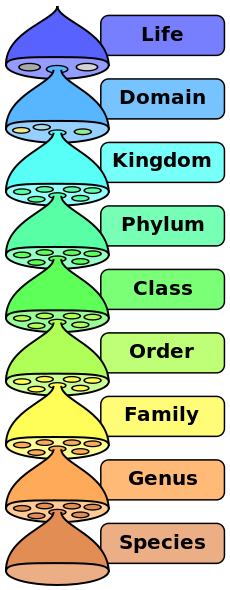
Jim, Macro evolution has been observed in the laboratory under controlled conditions – within just a few generations you can “breed” fish to be miniature fish, which reproduce and “grow” up while never getting bigger than the size they were bred for.
And to me:
Macroevolution does NOT require an “increase in the gene pool” – the gene pool of the horse and donkey are virtually identical, yet they are separate species (yet closely related enough to produce sterile offspring). The reason they are different species is due to the cytogenetic changes (note that does NOT involve additional genetic material or a greater gene pool).
You should know what the other side believes before asking a question, its 101, you asked: “If God created all the SPECIES currently on the Earth either 6000 years ago, or through intelligent design, why is there so much evidence that supports Evolution?” He didn’t, God created the “Kinds,” which is more like Order (Felidae, Canidae, etc). You have a doctorate, right? Do you get it yet? Order… species… different.
In every Oxford dictionary and companion book to biology, physics, and the like, textbooks (I have many university level texts)… macroevolution has the same definition. I think you telling people on this site that special change is evidence of macro-evolution is deplorable. But maybe you thought no one would catch this because you were degreed. You did back away from this though… in many more words though than just saying “I was wrong.” I even had to throw in an elementary picture to make the point (http://tinyurl.com/3npkel8).
It is very important not to confuse the “created kind” with the modern use of the word species. Although animals like the fox and coyote might be considered different taxonomic species, they are still parts of the same “kind” of animal. The created kind is thought to be more often synonymous with the “Family” level of classification in the taxonomic hierarchy; at least in mammals; and occasionally it can extend as high as the order level. Here are some examples:
Felidae — Scientists from Creation Ministries International and the Institute for Creation Research have proposed that the original feline kind was comparable to the Liger and the Tigon.
Canidae — Including Wolves, Foxes, Jackals, Coyotes, and Domestic dogs.
Camelidae — Including both the Camel and the Llama, which are reproductively compatible, their hybrid offspring being known as “Camas.”
Bovidae — Including Cattle, Buffalo, Bison, and Yaks.
Equidae — Including Horses, Zebras, and Asses.
Caprinae — Including Sheep, Goats, and Ibex.
Crocodilia — Including all the varieties of Alligators, Crocodiles, and Gharials.
Elephantidae — Including African and Asian elephants, Mammoths, Mastodons, and Gomphotheres.
Thus the created kind corresponds roughly to the family level of taxonomic classification, and possibly even the order, with the notable exception of humanity wherein the genus is representative.[10]
Humanity — Dr. Sigrid Hartwig-Scherer of the University of Munich concluded that H. erectus/H. ergaster, Neanderthals and H. sapiens were members of the same basic type (which corresponds to a monobaramin) genus Homo.
http://creationwiki.org/Created_kind
BOOK: “Refuting Evolution 2,” by Dr. Jonathan Sarfati. (Free online: http://creation.com/refuting-evolution-2-index)
*INTERMEDIATES (THIS DOESN’T MEAN THEY DON’T BELIEVE IN EVOLUTION, IT JUST MEANS THEY ARE HONEST):
Anthropologist Edmund R. Leach told the 1981 Annual Meeting of the British Association for the Advancement of Science:
✔ “Missing links in the sequence of fossil evidence were a worry to Darwin. He felt sure they would eventually turn up, but they are still missing and seem likely to remain so.”
David Raup, curator of geology at the Field Museum of Natural History in Chicago:
✔ “He [Darwin] was embarrassed by the fossil record because it didn’t look the way he predicted it would and, as a result, he devoted a long section of his Origin of Species to an attempt to explain and rationalize the differences…. Darwin’s general solution to the incompatibility of fossil evidence and his theory was to say that the fossil record is a very incomplete one…. Well, we are now about 120 years after Darwin, and knowledge of the fossil record has been greatly expanded. We now have a quarter of a million fossil species but the situation hasn’t changed much. The record of evolution is still surprisingly jerky and, ironically, we have even fewer examples of evolutionary transition than we had in Darwin’s time. By this I mean that some of the classic cases of Darwinian change in the fossil record, such as the evolution of the horse in North America, have had to be discarded or modified as a result of more detailed information [archaeopteryx as well].”
Harvard paleontologist Stephen Jay Gould, probably evolution’s leading spokesperson today, has acknowledged:
✔ “The extreme rarity of transitional forms in the fossil record persists as the trade secret of paleontology. The evolutionary trees that adorn our textbooks have data only at the tips and nodes of their branches; the rest is inference, however reasonable, not the evidence of fossils.”
George Gaylord Simpson, perhaps the twentieth century’s foremost paleontologist, said:
✔ “This regular absence of transitional forms is not confined to mammals, but is an almost universal phenomenon, as has long been noted by paleontologists. It is true of almost all orders of all classes of animals, both vertebrate and invertebrate.”
David B. Kitts of the school of Geology and Geophysics at the University of Oklahoma wrote:
✔ “Despite the bright promise that paleontology provides a means of ‘seeing’ evolution, it has presented some nasty difficulties for evolutionists, the most notorious of which is the presence of ‘gaps’ in the fossil record. Evolution requires [key word, requires] intermediate forms between species and paleontology does not provide them.”
Dr. Steven Stanley of the department of Earth and Planetary Sciences, John Hopkins University, says:
✔ “The known fossil record fails to document a single example of phyletic evolution accomplishing a major morphologic [structural] transition and hence offers no evidence that the gradualistic model can be valid.”
Professor Heribert Nilsson, Director of the Botanical Institute at Lund University, Sweden, declared after forty years of study:
✔ “It may, therefore, be firmly maintained that it is not even possible to make a caricature of an evolution out of paleobiological facts. The fossil material is now so complete that it has been possible to construct new classes and the lack of transitional series cannot be explained as due to the scarcity of the material. The deficiencies are real, they will never be filled.”
Gareth J. Nelson, of the American Museum of Natural History:
✔ “It is a mistake to believe that even one fossil species or fossil ‘group’ can be demonstrated to have been ancestral to another. The ancestor-descendant relationship may only be assumed to have existed in the absence of evidence indicating otherwise.”
Moreover, Newsweek reported:
✔ “In the fossil record, missing links are the rule: the story of life is as disjointed as a silent newsreel, in which species succeed one another as abruptly as Balkan prime ministers. The more scientists have searched for the transitional forms between species, the more they have been frustrated.”
Moreover, one of my favorite quotes from an article entitled Paleontology and Uniformitarianism:
✔ “Contrary to what most scientists write, the fossil record does not support the Darwinian theory of evolution because it is this theory (there are several) which we use to interpret the fossil record. By doing so, we are guilty of circular reasoning if we then say the fossil record supports this theory.”
BOOK: “Darwin’s Enigma,” by Luther Sunderland (free online: http://www.creationism.org/books/sunderland/DarwinsEnigma/)
PROSELYTIZING
I am merely continuing the conversation. You mentioned God is un-provable. However, God entered into creation, thus — giving us a verifiable way of proving the existence of Himself. You put the onus on someone (happened to be me) to explain a way that we can prove His existence as much as we can prove Augustus Caesar existed. If this is proselytizing, then so be it.
BOOK: “The Case for the Resurrection of Jesus,” by Gary R. Habermas and Michael Licona.
OCCAM’S RAZOR
Both Dr. William Lane Craig and Dr. J.P. Moreland use it to prove God. the earliest version is Aristotle, and Galileo Galilei and Albert Einstein used it. Remember, Einstein said, “I’m not an atheist and I don’t think I can call myself a pantheist,” this doesn’t leave too many options.
BOOK: “The Case for a Creator,” by Lee Strobel.
FISH STORIES
The actual change in the study was by artificial selection (man caused — intelligence), leading to this truism:
Note that this is not evolution because the selection pressure—which is essentially an artificially-imposed version of “natural selection”—simply favors certain genes over others; it cannot generate any new genetic information. Neither such ‘artificial’ nor ‘natural’ selection can turn plaice into people; it can only operate on (i.e. cull out) genetic information that already exists.
Stephen Jay Gould called them “just-so stories” (also called an ad hoc fallacy, is an unverifiable and unfalsifiable narrative). “How the Daffodil Got Its Trumpet;” “How the Rhinoceros Beetle Got Its Horns;” Etc… evolution has stories, you merely told one yourself: how silversides size proved macro-evolution.
BOOK: “Darwinian Fairytales: Selfish Genes, Errors of Heredity, and Other Fables of Evolution,” by David Stove.
DEGREES/BACKGROUND
You seem to reject positions taken because of the persons degree or teaching position, or whether they are religious or not. So, here is a short list of biologists who are mostly creationists and some I.D.’ers:
• Dr. Arthur Ernest Wilder-Smith (Ph.D. in physical organic chemistry at University of Reading, England; Dr.es.Sc. in pharmacological sciences from Eidgenossische Technische Hochschule (Swiss Federal Institute of Technology) in Zurich; D.Sc. in pharmacological sciences from University of Geneva)
• Dr. Jerry R. Bergman (Ph.D. student, department of chemistry Miami University, Oxford, Ohio; Ph.D. in human biology from Columbia Pacific University, San Rafael, California; Ph.D. in measurement and evaluation, minor in psychology, from Wayne State University, Detroit, Michigan)
• Dr. Nathaniel Jeanson, Biology (Ph.D. in cell and developmental biology from Harvard Medical School)
• Dr. Kimberly Berrine, Microbiology & Immunology
• Prof. Vladimir Betina, Microbiology, Biochemistry & Biology
• Dr. Andrew Bosanquet, Biology, Microbiology
• Dr. Rob Carter, Marine Biology (Ph.D., University of Miami)
• Dr. David A. DeWitt, Biology, Biochemistry, Neuroscience (Ph.D. in Neuroscience from Case Western Reserve University, School of Medicine)
• Dr. Andrew J. Fabich, Microbiology
• Prof. Carl B. Fliermans, Professor of Biology (Ph.D., Indiana University)
• Prof. Robert H. Franks, Associate Professor of Biology
• Dr. James A. Huggins, Professor and Chair, Department of Biology (Ph.D, University of Memphis)
• Dr. Arthur Jones, Biology (Ph.D., University of Birmingham)
• Prof. Gi-Tai Kim, Biology
• Dr. Leonid Korochkin, M.D., Genetics, Professor of genetics at Yale University, head of Molecular Biology laboratory of the Russian Academy of Sciences
• Prof. Chris D. Osborne, Assistant Professor of Biology
• Dr. Ariel A. Roth, Biology (Ph.D. in biology from the University of Michigan)
• Dr. Timothy G. Standish, Biology (Ph.D. in biology and public policy from George Mason University)
• Dr. Sung-Hee Yoon, Biology
• Dr. Henry Zuill, Biology (Ph.D. in biology from Loma Linda University)
• Dr. Frank Marsh, Biology
• Dr. Jonathan Wells, Biology (molecular and cell biology from the University of California at Berkeley)
• Dr. Lee Spencer, Biology
• Dr. Chris D. Osborne, Biology (Ph.D. in biology from Loma Linda University)
• Dr. David Menton, Biology (Ph.D .in Biology from Brown University)
• Dr. John W. Klotz, Genetics (Ph.D. in genetics from the University of Pittsburgh)
• Dr. Pierre Gunnar Jerlström, Molecular Biology (Ph.D. in molecular biology, Griffith University, Queensland, Australia)
• Dr. Karen E. Jensen, Biology (Ph.D. in biology from Loma Linda University)
• Dr. Wayne Frair, Biochemistry (Ph.D. in Biochemical Taxonomy from the Rutgers University)
• Dr. Daniel Criswell, Molecular Biology (Ph.D., University of Montana)
• Dr. Kenneth B. Cumming, Biology (Ph.D. [and M.S.] from Harvard)
• Dr. Art Chadwick, Biology (Ph.D., University of Miami)
• Dr. Michael E. Brown, Biology (Ph.D. in biology with an emphasis in molecular biology from Loma Linda University)
• Dr. Raymond G. Bohlin, Biology (Ph.D. in molecular and cell biology from the University of Texas)
BOOK: “In Six Days: Why Fifty Scientists Choose to Believe in Creation,” by John F. Ashton, ed.
